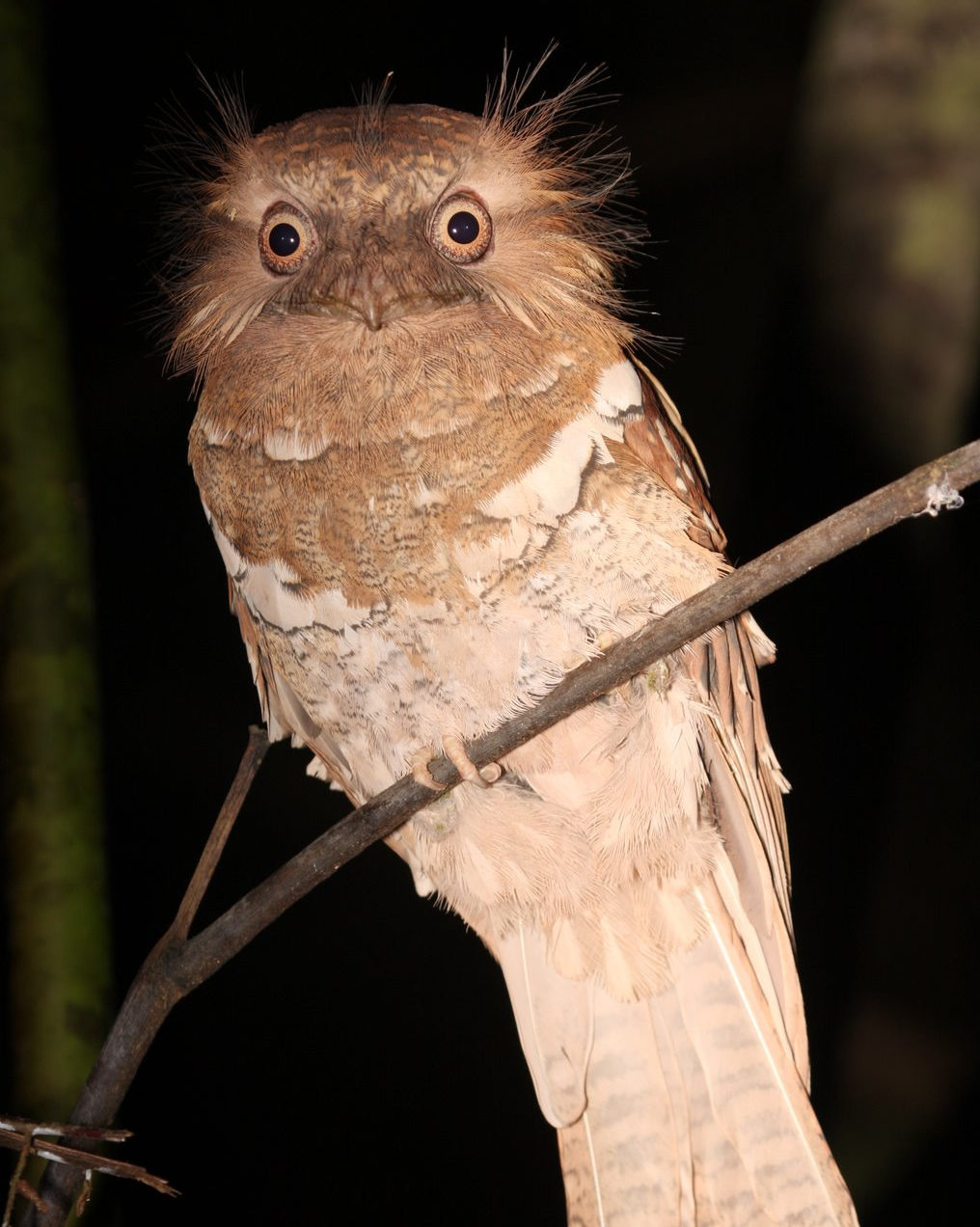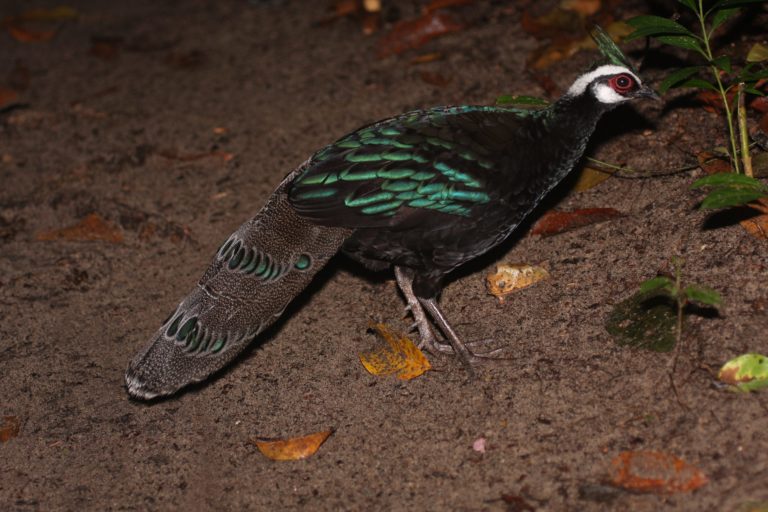The Philippines is made up of more than 7,000 islands, supporting an extraordinary number of species that occur nowhere else on the planet. Eighty-six new endemic bird species have been described in the Philippines in just the last decade more than all avian endemics ever recorded in either China or India. Nevertheless, the countrys currently known 594 avian species depend on forests, grasslands and wetlands that are rapidly disappearing.
Overall, nearly one-sixth of Philippine birds are considered threatened on the IUCN Red List, and of those, more than 43% (40 species) are listed as endangered or critically endangered. The country has the eighth-highest number of globally threatened bird species, including hornbills, true owls, rare pigeons and Old World flycatchers.
But even more species are at risk than previously thought, according to a new study published in June in Frontiers in Ecology and Evolution. The research team, led by biologists from the University of Utah, thoroughly assessed the Red List status of 446 resident Philippine bird species by analyzing data stored in a massive database compiled from field visits, peer-reviewed studies, ornithology books, field guides, and BirdLife International.
They found that 84 species are at greater risk than indicated by their current Red List status, including 14 species that the authors say warrant globally threatened status, which range from vulnerable to endangered to critically endangered.
The study also looked at the effect of a range of ecological, biogeographical and life-history traits on avian extinction risk. Results indicate that endemism, narrower elevational range, high forest dependency, and larger body size heighten a species extinction risk.
Our study provides a roadmap for not only which species may warrant heightened conservation attention, but which traits a species may have that can help inform if it may likely be more at risk of extinction, Kyle Kittelberger, a doctoral candidate from the University of Utah and lead author of the study, said in a statement. There is a pressing need to assess what traits make some species more at risk of extinction than others and to use this understanding to help inform conservation efforts.
Among their findings are that the Luzon hornbill (Penelopides manillae), Philippine serpent eagle (Spilornis holospilus) and writhed hornbill (Rhabdotorrhinus leucocephalus), warrant heightened classification to vulnerable, endangered and critically endangered status, respectively. The latter two species should be focal conservation species, say the study authors. In addition, the Palawan peacock-pheasant (Polyplectron napoleonis), Calayan rail (Gallirallus calayanensis), and Philippine eagle-owl (Bubo philippensis) also require reclassification from their current status of vulnerable to endangered, the study says.
The Red List in action
According to ekercio?lu, it is crucial to update the IUCN Red List to monitor the conservation status of species in order to allocate the limited funds and resources for conservation in an efficient manner. Setting priorities is essential because there are about 600 bird species in the Philippines, 258 of which are endemic.
“When people believe a species is not as threatened as it actually is, they often take much less, or even no, action to conserve it,” ekercio?lu stated. “Basically, knowing a species’ conservation status is crucial to preserving it.” .
The Haribon Foundation, a Philippine-based NGO, is particularly concerned about the critically endangered Philippine eagle (Pithecophaga jefferyi), which has seen a rapid population decline over the last 60 years, largely due to extensive deforestation. Haribon is helping it by protecting conservation areas in Gabaldon, Nueva Ecija and part of the Central Sierra Madre Mountains. Other important conservation species include the rufous-headed hornbill (Rhabdotorrhinus waldeni), which is safeguarded through projects in Antique and Aklan provinces.
According to Gregorio E. de la Rosa Jr. The IUCN Red List status of species serves as the foundation for these conservation projects, according to the Haribon Foundation’s manager of conservation science and research. According to him, the Red List unites people behind projects that concentrate and maintain conservation efforts, and the data from the most recent study will assist in updating the nation’s bird conservation policies.

A decade in the making
Associate professor of biology at the University of Utah Ça?an ekercio?lu told Mongabay that he started this research over ten years ago while gathering field data on Philippine birds with colleague Navjot Sodhi of the National University of Singapore. He claimed to be an avid bird watcher who was new to the Philippines and was shocked to see 161 species in just 13 days that he had never seen before. According to ?ekercio?lu, Sodhi passed away in 2011, and the study was put on hold for ten more years, but it was not forgotten. Resolved to ensure his friend’s work was preserved, ekercio?lu decided to update and revise the study.
There was a lot of information to update. In the intervening years, dozens of new bird species have been described in the Philippines, primarily as a result of taxonomic revisions and genetic studies that divided parent species into multiple distinct species. Due to their small or restricted populations, many of these new species were immediately deemed threatened, and it’s possible that some species are disappearing before they’re even named. In addition, several species that were once common have become progressively rare.
“We aimed to draw attention to the numerous other endangered and critically endangered species found in the Philippines that are presently being disregarded,” ekercio?lu stated. Particularly considering that, after Indonesia and Australia, the Philippines already has the third-highest number of endemic species that are endangered worldwide .

The researchers then used those traits to assess the expected conservation status of Philippine birds, contrasting the predicted conservation status with the conservation designations listed on the IUCN Red List. They discovered that 14 species were predicted to be globally threatened, and 84 species were predicted to be in worse condition than their Red List designation (i e. endangered, critically endangered, or vulnerable) that aren’t presently designated as such
Doctorate candidate Kyle Kittelberger of the University of Utah School of Biological Sciences says, “Our study provides a roadmap for not only which species may warrant heightened conservation attention.” However, certain characteristics of a species can indicate whether or not it is more likely to go extinct. .
By comparing the ecological and life-history characteristics of bird species, such as body mass, diet, elevation range, and clutch size (the number of eggs laid in a nesting season), with their conservation status, the researchers were able to identify the bird traits most predictive of extinction risk. This allowed them to gain an understanding of the condition of Philippine birds. They discovered that there was a noticeably higher chance of extinction for a species that was native to the Philippines. Birds are also at risk of going extinct due to their large bodies, reliance on forests, and limited range of elevation.
“We projected that the critically endangered and endangered statuses of the Philippine Serpent-eagle and Writhed Hornbill, two species that are not currently listed as globally threatened, states Kittelberger. Additionally, we projected that three species that are currently listed as vulnerable globallythe Philippine Eagle-owl, the Calayan Rail, and the Palawan Peacock-pheasantare probably endangered. Because they might be more threatened than is currently thought, all of these birds require increased conservation attention. .
Situated in Southeast Asia, the Philippines is home to almost 600 bird species and is regarded as a global biodiversity hotspot. It is also one of the world’s most biodiverse nations. A significant amount of the fauna is unique to the nation, meaning it cannot be found anywhere else. Additionally, the Philippines is home to a high diversity of recently recognized species that are distinct from other closely related species, indicating that there is still much for scientists to learn about the ecosystems of the Philippines.
FAQ
Which country has the most birds?
|
Rank
|
Country / region
|
Bird species count
|
|
1
|
Colombia
|
1917
|
|
2
|
Peru
|
1892
|
|
3
|
Brazil
|
1864
|
|
4
|
Indonesia
|
1791
|
How many endemic birds are there in the Philippines?
What is the rarest bird in the Philippines?
How many species are in the Philippines?